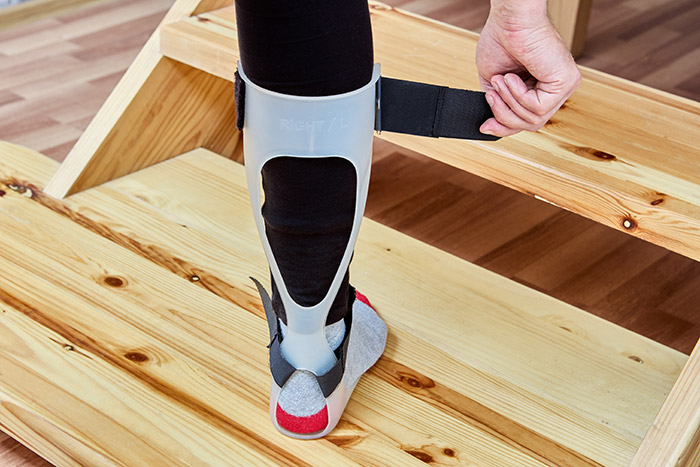Drop Foot Injury
The Drop Foot Injury: A Complication of Medical Mal-Practice and/or Traumatic Spinal Cord Injury
In the context of personal injury law, we are concerned with victims’ and rights and victims’ compensation as they pertain to medical mal-practice and spinal cord injuries. Certainly, drop foot has other causes including damage to the leg and lower extremity, which can be surgically attempted. In workplace accidents resulting in drop foot, the implications for worker’s compensation are significant, and our firm is well-versed in these types of claims.
Dropped foot can involve one or both feet depending on the underlying condition. It occurs in diseases that affect the nerves in the legs or spinal cord. It can also be seen as a feature of some forms of muscular dystrophy. By far the most common cause of dropped foot is direct compression of the anterior tibial nerve. The nerve can be compressed by outside force of injury or external pressure at the point where it passes over the outer portion of the leg just below the side of the knee. The type of injury associated with car accidents or major trauma to the spinal cord can cause irreversible tibial nerve damage resulting in the inability to walk properly.

In the personal injury arena, we see cases of drop foot as the result of medical mal-practice when surgery is either done incorrectly, or delay is created which causes an irreversible condition. Nerves can regenerate, however, nerve regeneration proceeds slowly at approximately an inch per month or 1mm per day. Muscle tone often returns by 6 months with gradual improvement in strength for two years. Physical therapy and electrical stimulation are utilized to enhance recovery.
The other scenario is the trauma victim, who suffers a spinal cord injury that results in a problem that may likely not heal, nor return the accident victim to his/her pre-accident condition. The value of such horrific injures is up to a jury to determine. Verdicts have ranged from six figures to high seven figures on drop foot cases. Mobility is completely limited and that is the controlling value indicator.
In the context of Las Vegas workers’ compensation, drop foot often results in a Permanent Partial Disability (PPD) rating ranging from 13% to 30% whole body impairment, depending on the severity. This rating may also be combined with other related disabilities, such as those affecting the hip or knees, to result in a higher overall PPD rating. Determining these percentages can be challenging, given the complexity of quantifying the functional loss of a limb. For example, losing one limb constitutes a 25% loss of the total limbs or a 50% loss of leg function if only two legs are considered. However, the percentage is adjusted since the remaining leg often retains some restricted mobility, differing from cases involving complete amputation.
Our law firm does not gauge the “drop foot” syndrome on percentages given by text books in accessing damages in the worker’s compensation arena; instead we value it like a jury would: Loss of full use of the leg, no running, loss of balance, no standing for long periods, no heavy lifting, difficulty in navigating stairs, shoe difficulty (in having to purchase two pairs of shoes to accommodate the foot brace often worn), the use of a cane to navigate, the reality of carrying groceries, luggage, infants, muscle atrophy, and all the other problems associated with being non-active.
The mental damages are also extensive when addressing drop foot: socially, sexually, and emotionally the tolls of dealing with the disability can affect a victim’s psychology causing depression and other coping techniques.
The law firm Benson & Bingham Accident Injury Lawyers, LLC deals with major spinal cord injury cases, and specializes in drop foot cases. Please call us at 702-382-9797 to schedule a free consultation about your case.
Free Consultation

